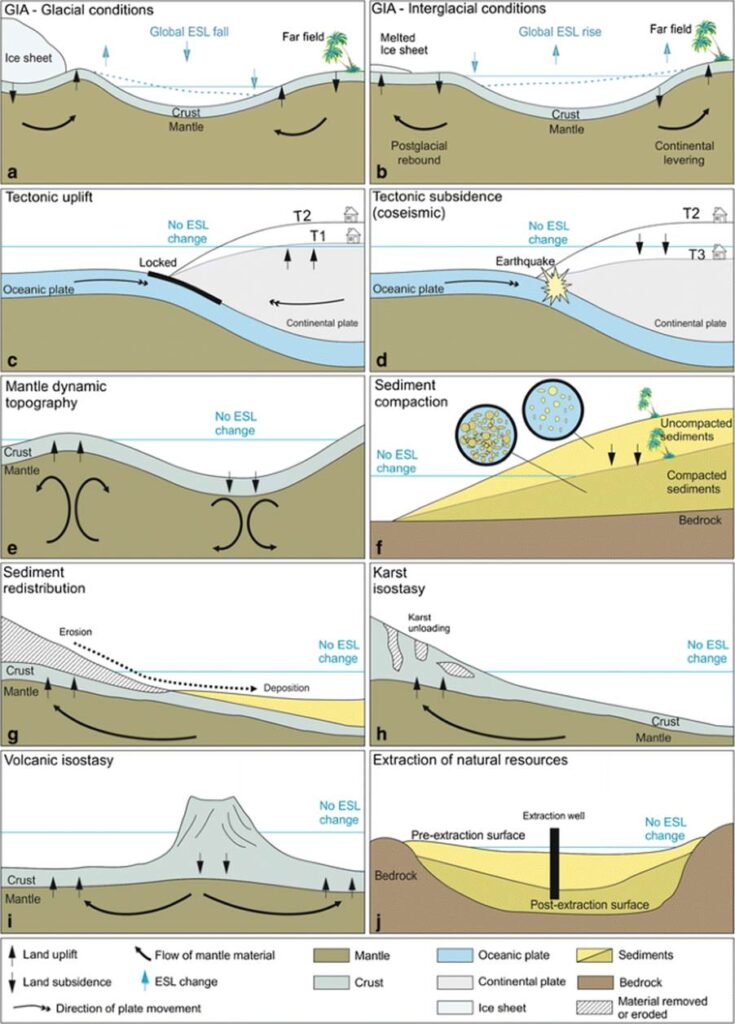
Q1 (c) With suitable examples explain the factors causing sea level changes. 10 Marks (2024/PYQ)
Oceanography – Sea level changes – Climate Change
Answer:
Introduction
Sea level change refers to the variation in the average position of the ocean surface relative to the land. It can be eustatic, isostatic, or tectonic in origin, and is driven by both natural processes and anthropogenic activities. These changes are central to understanding coastal geomorphology, climate dynamics, and marine transgressions/regressions.

1. Eustatic Changes (Global Sea Level Change)
These are worldwide changes in sea level due to variations in the volume of ocean water.
a. Glacio-eustasy
- Caused by melting or formation of ice caps.
- During the Last Glacial Maximum (~18,000 years ago), sea levels were ~120 meters lower.
- As per the Glacial Theory (Louis Agassiz), deglaciation leads to sea level rise.
b. Thermo-eustasy
- Water expands as it warms—thermal expansion due to global warming raises sea levels.
- Supported by IPCC reports and climate models indicating 3–4 mm/year rise in recent decades.
2. Isostatic Changes
These are local changes due to the vertical movement of land relative to the sea.
a. Glacio-isostasy
- Post-glacial rebound causes land uplift, reducing relative sea level.
- Evident in Scandinavia and Canada where land is still rising.
b. Hydro-isostasy
- Redistribution of ocean mass due to melting ice affects crustal balance and local sea level.
Theory: Isostasy (Airy-Heiskanen, Pratt) explains these vertical land movements.
3. Tectonic and Seismic Causes
- Plate movement, earthquakes, and volcanism alter land-sea interface.
- E.g., 2004 Sumatra Earthquake caused both uplift and submergence of coastal zones.
4. Anthropogenic Factors
- Groundwater extraction, dam building, and urbanisation affect local sea levels.
- Subsidence in Jakarta due to overextraction of aquifers is a modern example.
Conclusion
Sea level change is a dynamic process influenced by glacial, thermal, isostatic, tectonic, and human-induced factors. Understanding these through models (e.g., climate projections, isostatic models) and theories helps in predicting future trends critical to coastal planning and disaster mitigation.


